In 2019, a Dota 2 fan-made mod called Dota Auto Chess was released. As this mod grew in popularity, other developers would aim to replicate that success with their own unique takes on the genre, and so the auto battler genre was created.
With each subsequent auto chess title, the genre’s popularity continued to soar. Developers like Riot Games, Blizzard Entertainment, and Valve decided to make their own spin-offs with Teamfight Tactics, Hearthstone Battlegrounds, and Dota Underlords.
What is an auto battler?
An auto battler, sometimes known as auto chess, is a type of strategy game that features chess-like elements in which players place characters on a grid-shaped battlefield, who then fight an opposing team’s characters without any direct input from the player.
Currently, the most popular title of the bunch is Riot Games’ take on the auto battler genre, Teamfight Tactics, or more commonly known as TFT.
TFT is launching its newest version of the game onto the live servers on Jan. 21. It will introduce new champions, an updated aesthetic and plenty of balance changes. So now is as good a time as any to get into TFT.
The basics of TFT
There are eight players in a standard game, each with their own uniquely assembled team of units. The aim of the game is to build a team of synergized units that will fight against and defeat enemy teams.
Each player begins on 100 health, which is displayed on the right-hand side of the screen. Should a player’s team lose a battle, the player will take an amount of damage to their health that corresponds with just how severely they were defeated. The last team in the lobby with any remaining health wins.
The carousel
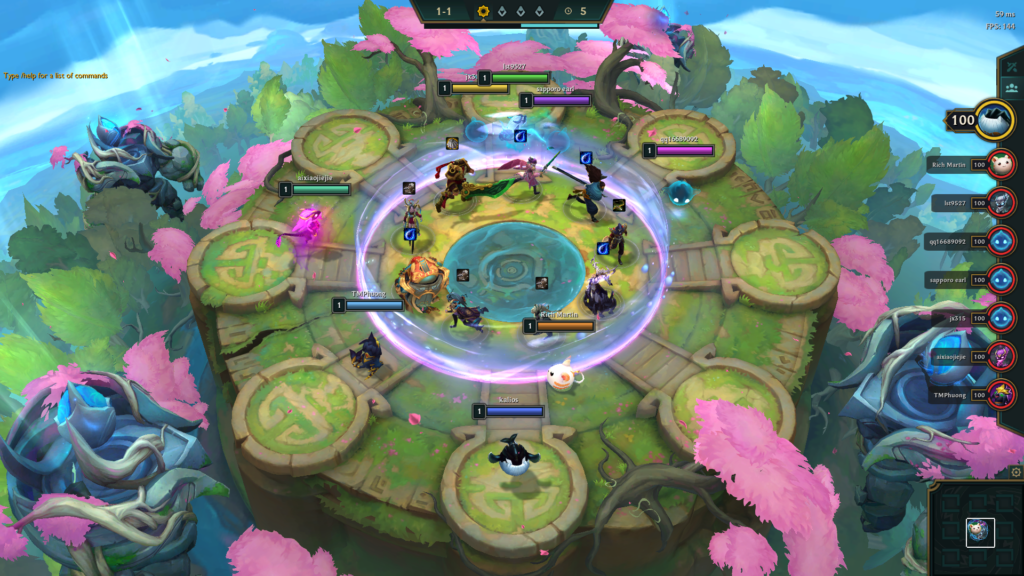
At the beginning of a game, each player will be loaded into the opening carousel, also known as the shared draft. A rotation of 10 champions will fill the center of the screen, each holding a useful item.
After a brief delay, all eight players will simultaneously be able to grab one of these units. All you have to do is walk up and touch the one you want with your Little Legend and it’ll latch on to you.
These carousel rounds will happen periodically throughout the game. These rounds act as a sort of comeback mechanic later into the game where players with the lowest health will be able to choose first at the carousel.
With experience, you’ll have a better idea of which champions or items will be more useful than others and will be able to use the carousel round to fit your strategy, but don’t worry too much about that for now.
After carousel: The PvE rounds
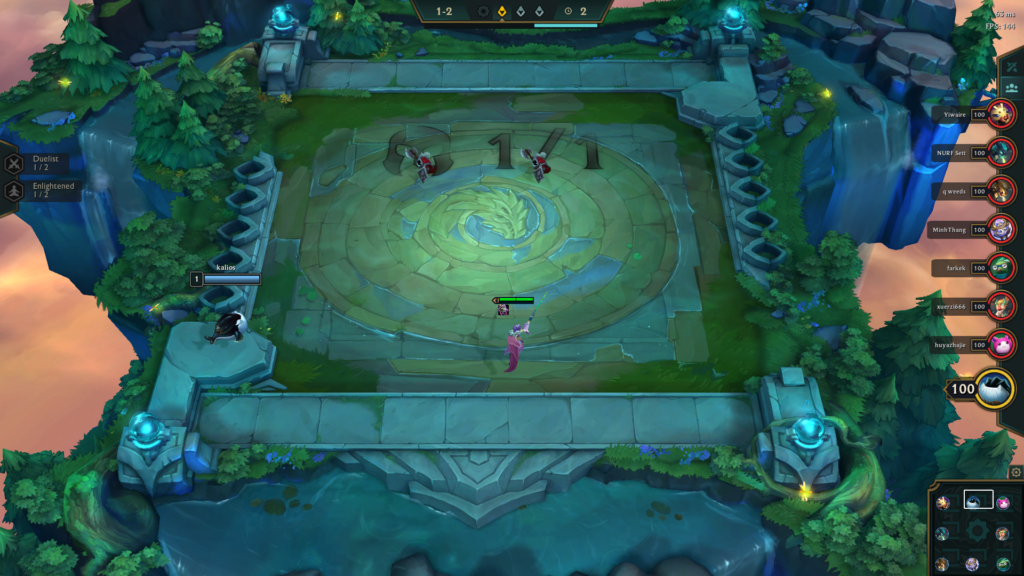
Immediately following the opening carousel are three PvE rounds in which you face a small group of minions that can drop gold, more units, items and even special lucky drops.
Before each battle commences, you have a short amount of time to prepare your board. In this time, you can drag your units around your board to better position for the upcoming battle.
Before combat, you can learn more about any of your units by right-clicking on them at any time to see the unit’s synergies, health and mana, cost, rank, ability information, and items.
Once the countdown to the battle finishes, combat will begin and your unit will begin fighting the minion bots. These beginning enemies are easy to defeat, so don’t worry about any strategy just yet.
Items
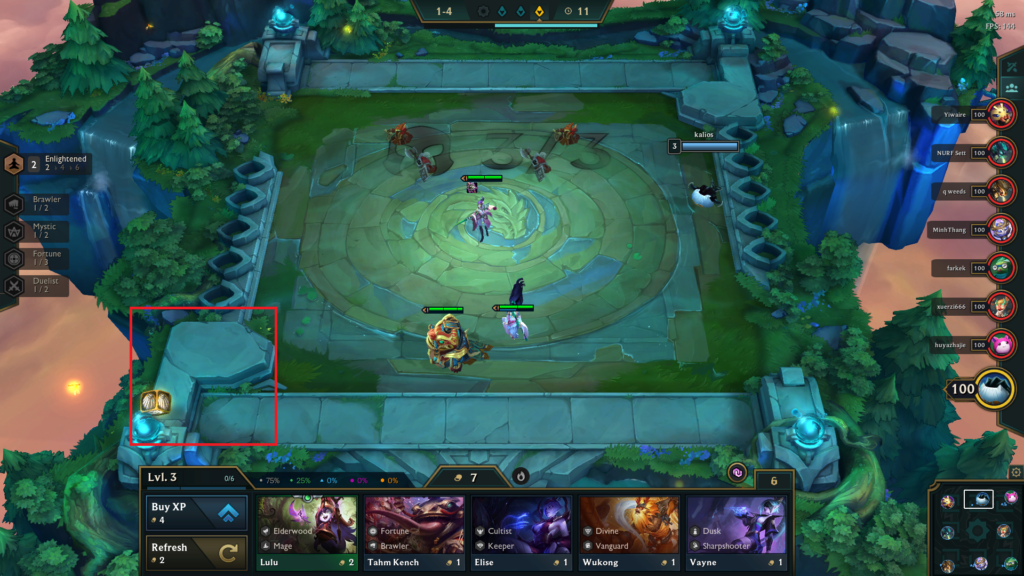
Items are small cube-shaped objects that act as stat-boosts for your champions. Some will enhance units attacking abilities and some will bolster its defensive capabilities. Either way, items are absolutely essential in creating powerful team compositions.
During those first three PvE rounds, you will be given at least one additional item from slaying the bot-controlled minions. Outside of the carousel rounds, this is the only other time you can get items.
Your items will automatically collect to the bottom left of your screen. To combine an item with a unit, simply click and drag the item onto one of the champions.
Item components can be combined with others to form a full item. To do this, simply drag a second item onto a champion that already has one item component placed on it already and they will magically combine together. But you don’t need to rush to combine and can instead keep it on the item bench to weigh your options.
For example, we may want to save the Negatron Cloak to try and combine it with another item we don’t have yet or use it on a different champion that may utilize it more efficiently.
The shop
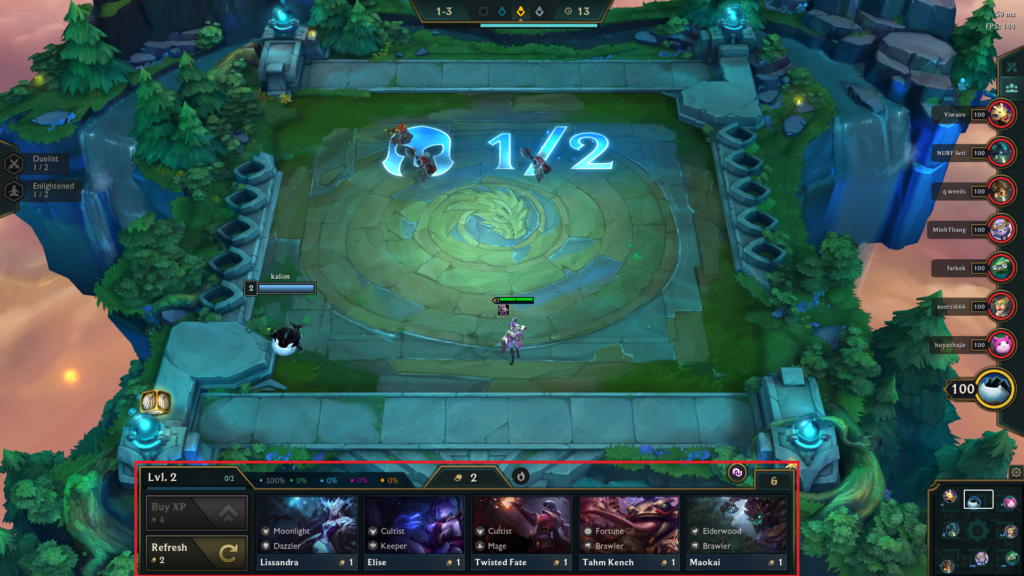
Following the first PvE minion round, the first important decisions in the game will have to be made.
At the bottom of your screen, a random assortment of units will appear in what’s called the shop. Only five will appear at any one time, and like a bag of Scrabble tiles, only a finite number of each champion exist in the shop as it’s shared between all eight players.
For each unit, you can see their cost, synergies, and a description of their ability if you hover them. Just above the units, you will see a coin symbol next to a number. This is the amount of gold you currently own.
There are three things that you can spend your gold on:
- Refresh, or re-roll: For the cost of two gold, clicking the refresh button will randomly re-roll your shop to have a different assortment of five champions appear.
- Buy XP: For the cost of four gold, you can click the buy XP button that will earn you four experience points that go toward increasing your player level.
- Your player level determines how many pieces you have on the board, for example, if you are level two then you can only have two units on your team.
- You will passively gain experience each round. You can see how many XP points you need to hit your next level at the bottom left of the button.
- Buy units: To buy units, simply click on them in the shop and they will appear on your bench, a non-combat zone that stores your leftover units.
Other options in the shop of note are the lock and sell functions. If you like the look of your current shop, but can’t afford any of the units, then use the lock button on the top right-hand side of the shop to lock them in place until you have more gold. If you need some gold or don’t like a unit you have placed on your board, you can sell the unit for its full price by dragging it off your board and back into the shop.
Gold economy and the importance of win streaks/loss streaks
What separates a lot of the casual players from the better players is their knowledge of econ.
In TFT, you’ll get passive income for free each round. At the start of the game, you will earn just two gold per round, but soon enough that passive interest will jump to five. Each round win will always earn you one gold on top of everything else.
The difficult thing about managing your economy is that a small amount of additional gold based on a current win or loss streak is added to the amount of gold you earn each round. So, if you are winning or losing consecutively, you will gain extra gold. These are the exact numbers:
- Two/three game streak = one extra gold per round
- Four game streak = two extra gold per round
- Five and greater game streak = three extra gold per round
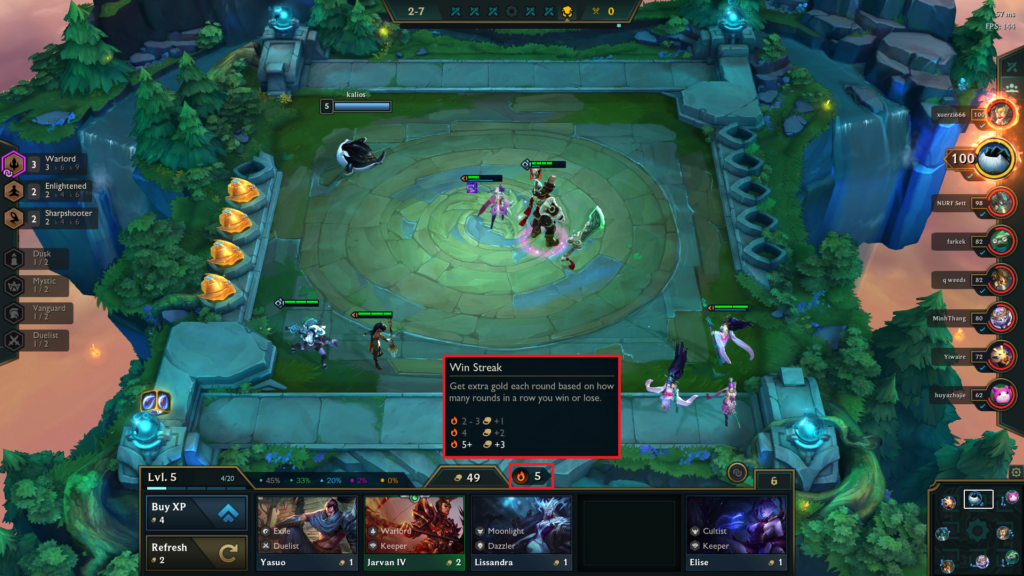
As you can imagine, this extra gold adds up quickly over time and can make all the difference in-game. This rewards players that play aggressively, making sure that players need to be always making decisions and building up their team, lest they fall behind in gold.
Some more advanced players can recognize early in a game that they have rolled a weaker board of units, and will loss streak on purpose so that they keep up a healthy bank of gold.
Depending on how much gold you have at the end of a round, you also get another interest bonus each round. The amount of interest you get is related to every 10 gold you have up until 50:
- 10 gold = + one gold interest
- 20 gold = + two gold interest
- 30 gold = + three gold interest
- 40 gold = + four gold interest
- 50 gold = + five gold interest (the max)
If you end the round with 45g, you will have an additional four gold from interest next round.
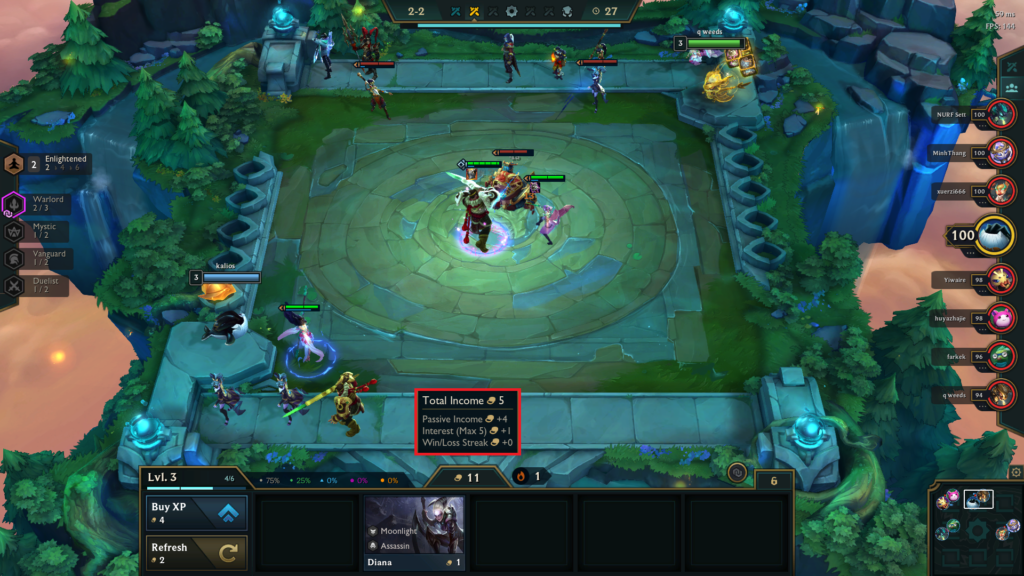
You can check how much gold you’re earning per round at any time by hovering your mouse above the gold icon at the top of your shop.
Building synergies in your team
Synergies are a critical part of auto chess strategy. Every champion has at least a couple of labels that denote which synergies they’re apart of. For example, Fiora has two synergies, Enlightened and Duelist.
Enlightened works well with units that are also Enlightened, and Duelist units work well with other Duelists. Once these synergies are activated, they give some kind of buff to some or all of your fielded champions.
To see whether or not your synergies are activated, check the left-hand side of your screen. This is the synergies column and gives you all the information you need on how to further expand your team.
In this example below, we just have Fiora and on the board. One Enlightened or Duelist is not enough to activate her synergy’s power. Enlightened activates its power when two of its units are active on your board. It powers up further when you have four of them, and again at six.
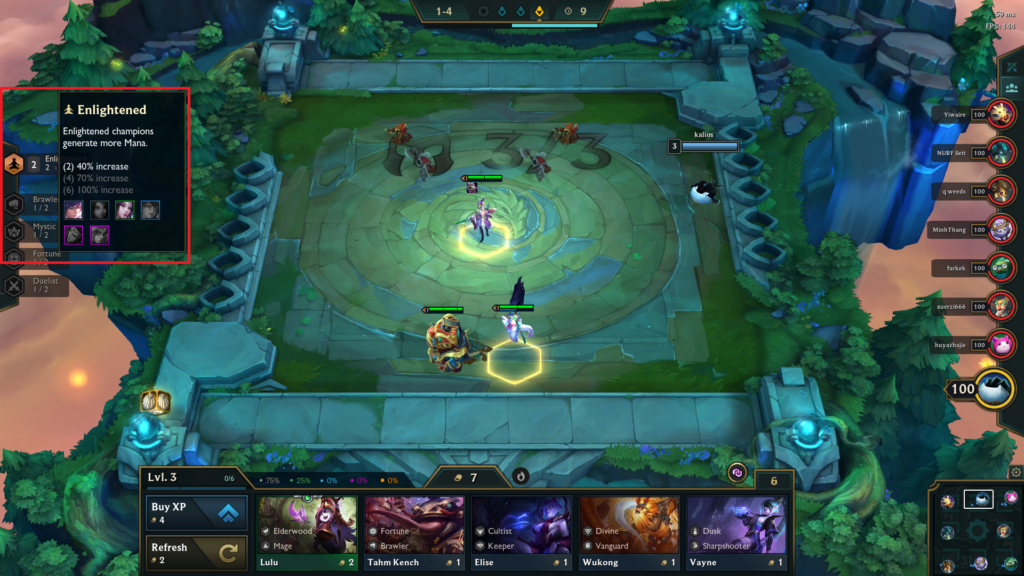
To reach that power, we should now scour every shop for other units with the Enlightened trait to so we can power up our team.

Now that we have found four Enlightened units, they each generate 100 percent more mana, meaning they will all cast their spells much quicker, doing more damage.
Ranking up units
Outside of items and synergies, the other important way you will strengthen your team is by leveling up your units.
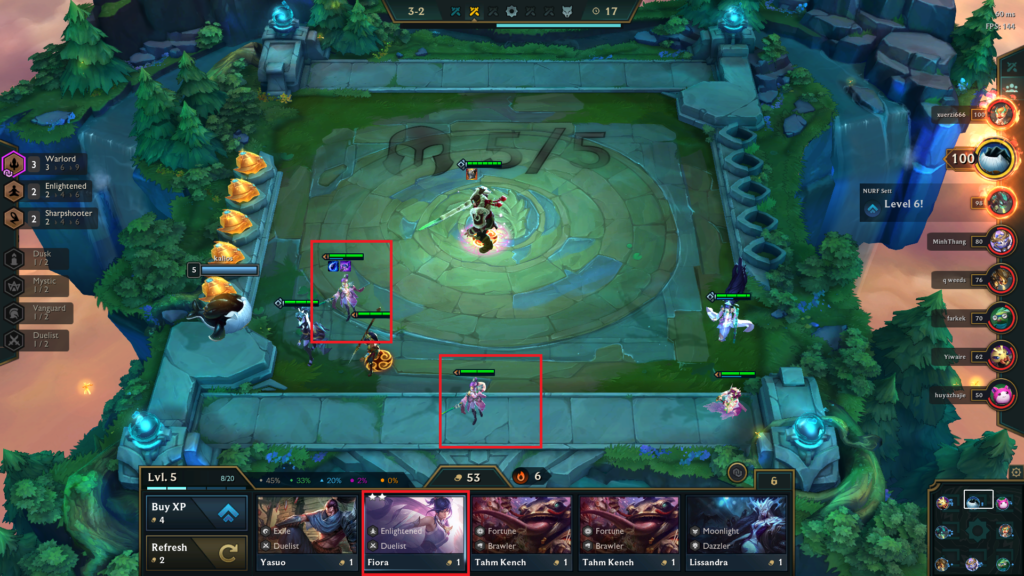
To do this, simply find three copies of a single unit. When you have these three copies, they will automatically combine into a two-star version that will enhance their battle potential.
Units from carousel and shop are always one star but are easily ranked up to two-star versions. These units can be ranked up again to become three-star units, but this can be a difficult and expensive process. Nine copies of a single one-star unit, or in other words three copies of a two-star unit, need to be found for a three-star unit to be created.
In this image, we already own two Fioras and have found the third one in the shop. After clicking on that Fiora, it combines all three into a two-star version. This can be identified by right-clicking the unit; we can now see two stars instead of one.
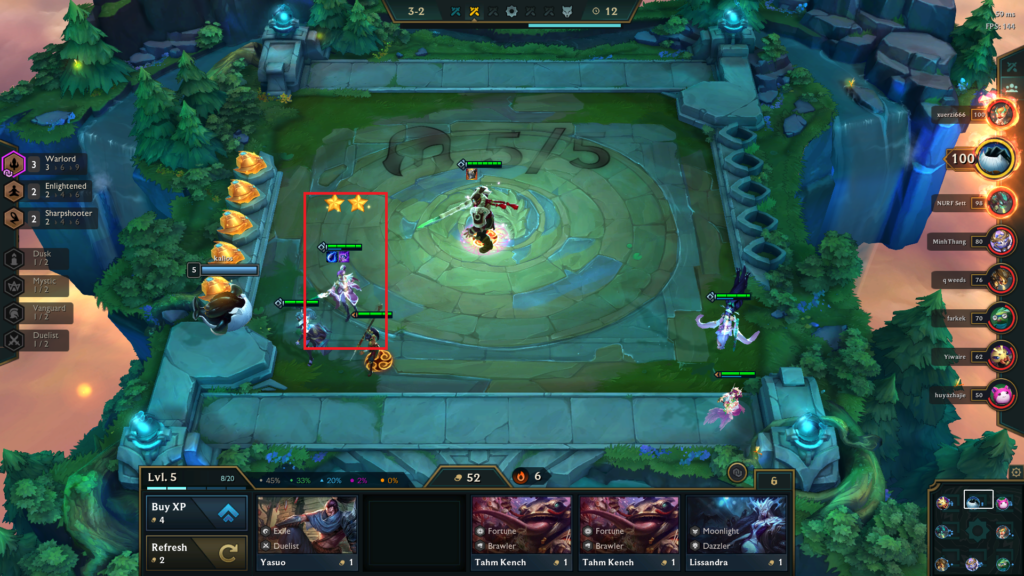
Shop odds
At certain points throughout the game, you’ll be searching for units in your shop to create a two or three-star version of it. It is important to know that at different levels of experience, different units will appear in your shop.
At levels one to four, mostly cheap units will appear in your shop. Units that all cost either one, two, or three gold each. The likelihood that you roll these cheap units is at its highest when you are low-leveled, and so if you wish to find Fiora, since she is a one-gold unit, you should be wary of being too high leveled that you can no longer find her in your shop.
Vice versa, if you wish to find the best units, you need to be level six, seven, eight, or nine to consistently find these units in your shop.
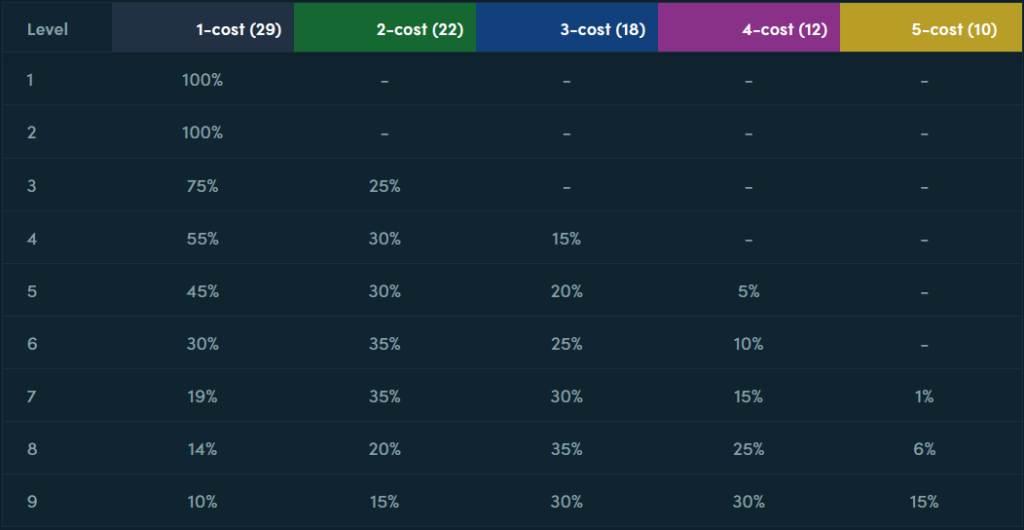
This table shows the odds of rolling into different costing champions at each level of experience during the game. For example, if you’re searching for a two-cost unit, then you should be trying your best to find it around level six.
PVP and the rest of the game
After the three minion rounds end, you will start to go head-to-head with one of your seven opponents each round until one team is left standing. Each team’s current remaining health is displayed on the right-hand side of the screen, and by clicking on any of the Little Legends that represent each player, it will take you to that player’s board so you can view their team.
Positioning
Everything up until this point has been more about the mechanics of the game and learning the basics of how to play. Positioning your units, however, is the first real step into the strategy of it all.
The basics of positioning might seem like common sense; the more tanky and bulky a unit is, the further to the front of your board it should be placed. This is so it can soak up as much damage as it can to buy time for your carry champions to output damage without bother.
Your units that are easily killed should be placed toward the back of your board and perhaps next to or behind another unit that might distract away from your squishy unit.
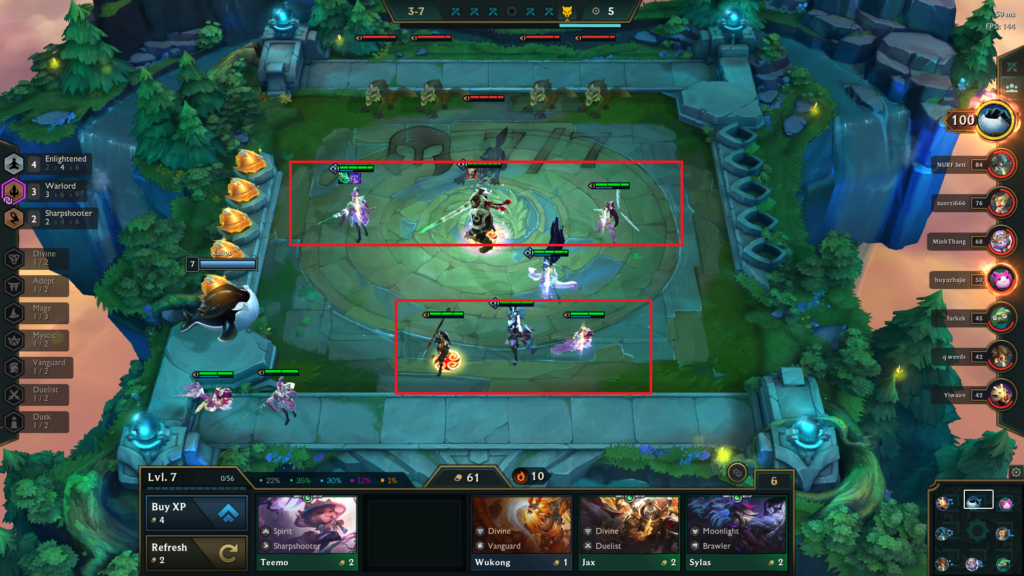
Now that you have the concept of building a front line and a back line, the idea is to become fluid with your positioning.
Are your back line carries being jumped on by an opponent’s Assassins and dying very quickly? Perhaps try placing one of your tanky units next to where the assassins jump to so that they spend their time wailing away on your unkillable tank.
If you keep your team positioned in the same spots for the entire game, it allows your opponents to plan for your positioning, giving them the upper hand.
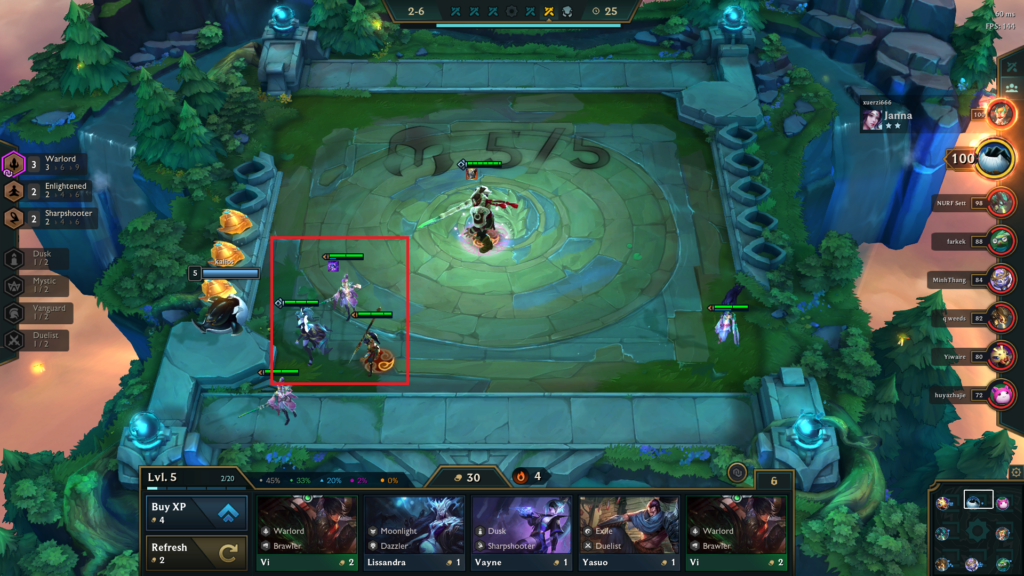
One small positioning trick that’s easy to learn and comes in handy is the backline corner, seen in the image above. This tactic safely hides your strongest damage dealer, in this case Vayne, from all sides while only committing a small number of units to defend it.
Mastering items
Now that you can build a team, and know how to use items, you might be wondering exactly which items are useful on which units and what time during the game.
The important details are:
- Every unit can hold a maximum of three items at a time.
- Granting a unit an item is permanent. To move an item to another unit, you’ll have to sell the unit currently holding the item or find an Item Remover or Item Reroller from one of the Lucky Lanterns.
- Some items cannot be placed on a unit, these are:
- Neeko’s Help: creates a one-star copy of whichever unit you use it on.
- Force of Nature: two Golden Spatulas together make a FoN which will permanently increase your team’s unit capacity by one.
- Shop Reroller: this item will reroll your shop with five different units that are related in some way to the unit you used this on.
- Item Remover: use this on a champion to remove all of its items without having to sell it back to the shop.
- Training dummy: use this item on your field to place a non-combative unit that will act as an extra frontline unit.
It’s important to know that items aren’t as rigid and important in a team composition as it might seem. For instance, Yasuo is a very popular one-cost carry and he can utilize Warmog’s Armor, Deathblade, Hand of Justice, Guardian Angel, Quicksilver Sash, and Infinity Edge. So don’t bother chasing the perfect items you saw in a Yasuo guide somewhere—that only limits your options further on into the game.
What is important to know, however, is what kind of unit it is that you are itemizing. If it is a bulky front liner, using components like Giant’s Belt and Chain Vest will enhance its armor and health, which makes sense. Whereas units that do a lot of their damage with regular attacks, synergize well with attack damage items like B.F. Sword. And finally, champions that deal most of their damage through their big unique spells love mana and attack power items, like Needlessly Large Rod and Tear of the Goddess.
With some experience, this will become second nature to you.
Extras
With each set, it’s important to know that the game introduces a certain gimmick or game mechanic that slightly changes the way in which players need to play the game. In the current set, Set 4.5, this mechanic is called the Chosen Mechanic and essentially acts as a random encounter in your shop that will magically enhance the abilities of some units.
If you think you have conquered this guide, try reading our guide on the Chosen mechanic for Set 4.5 to further boost your TFT abilities. But be wary that with Set Five on the horizon, a new game-changing mechanic will be introduced to spice up the game.
If you’re looking for some simple compositions to start off with in Set 4.5, try Warlords. Buy all of the units in your shop that state that they are Warlords and watch them power up beside one another.

Alternatively, Sharpshooter builds are quite straight forward too. Just line the back of your board with as many Sharpshooters as you can, and then dot the front line with big and tanky units like Brawlers or Vanguards.

For some of the absolute top-tier compositions currently being played on the PBE ahead of the Set 4.5 release, with more detailed descriptions on how to play, read here.



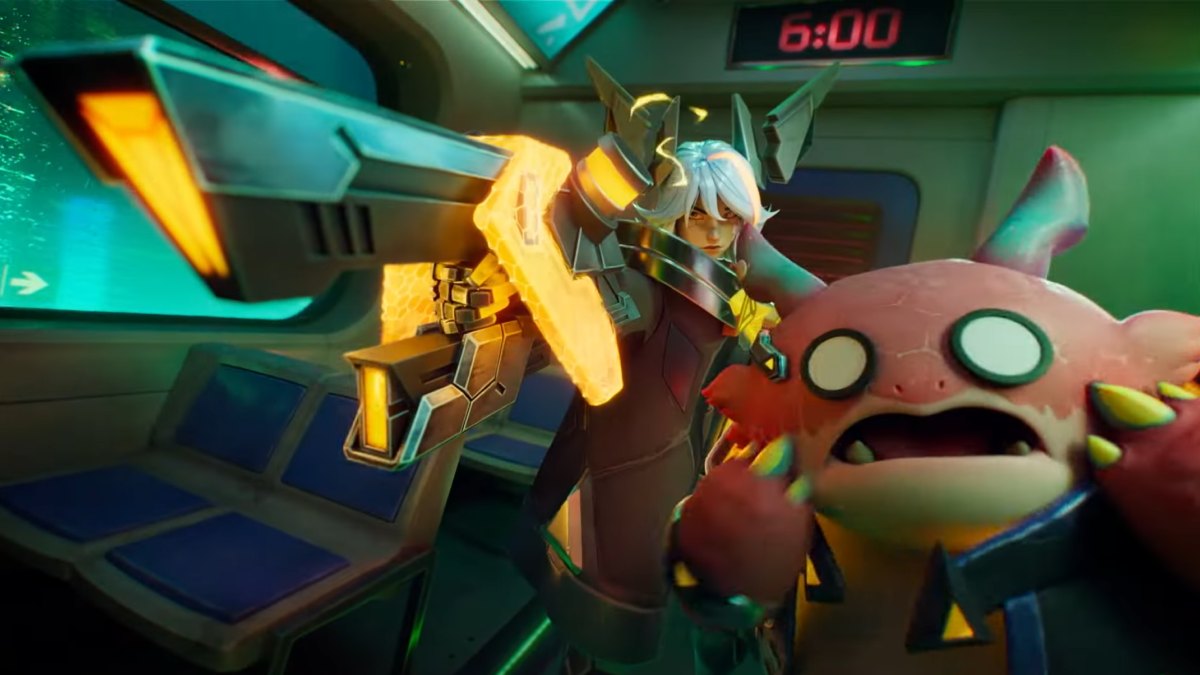
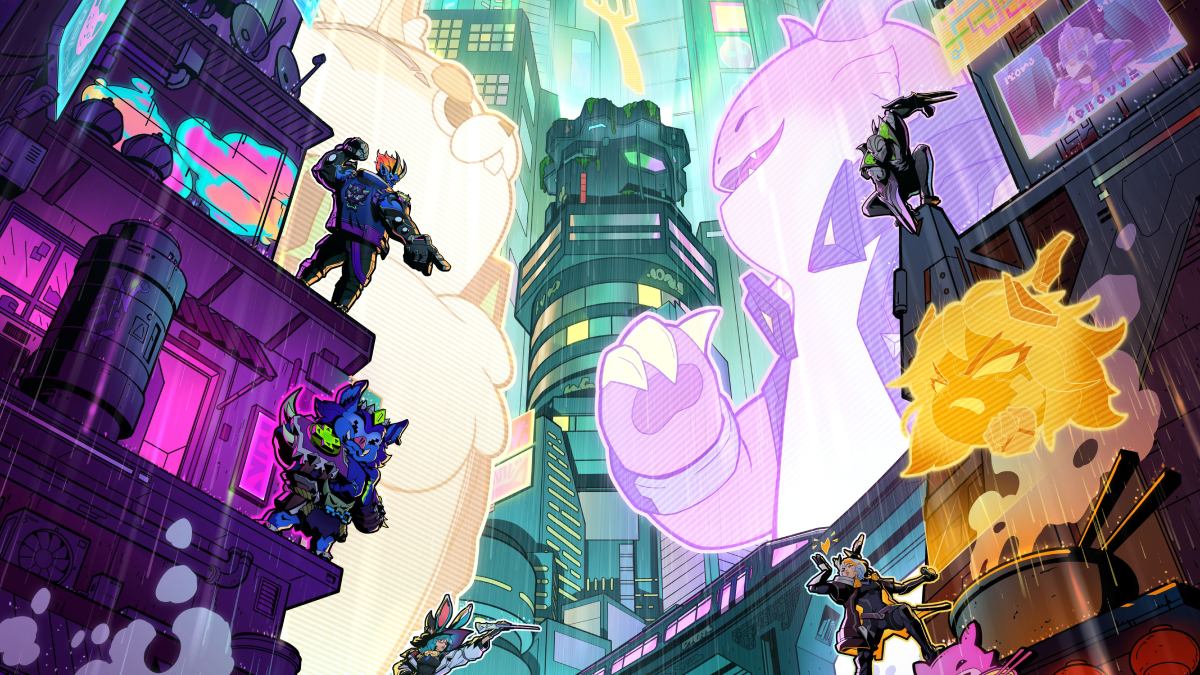
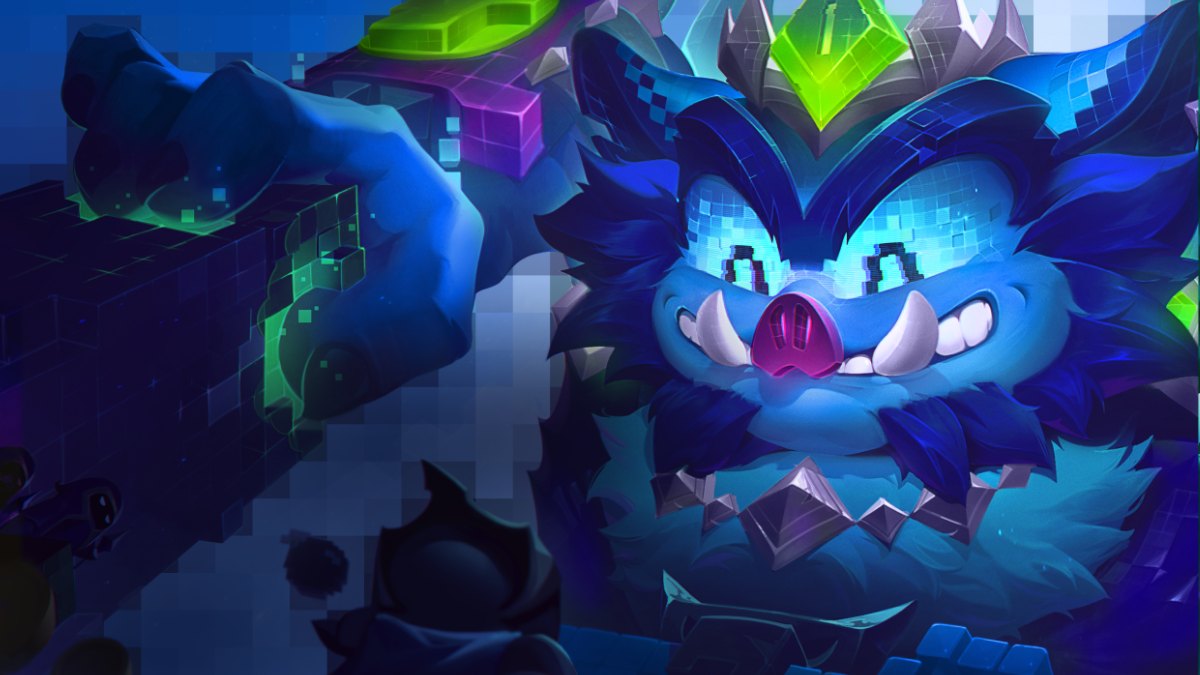
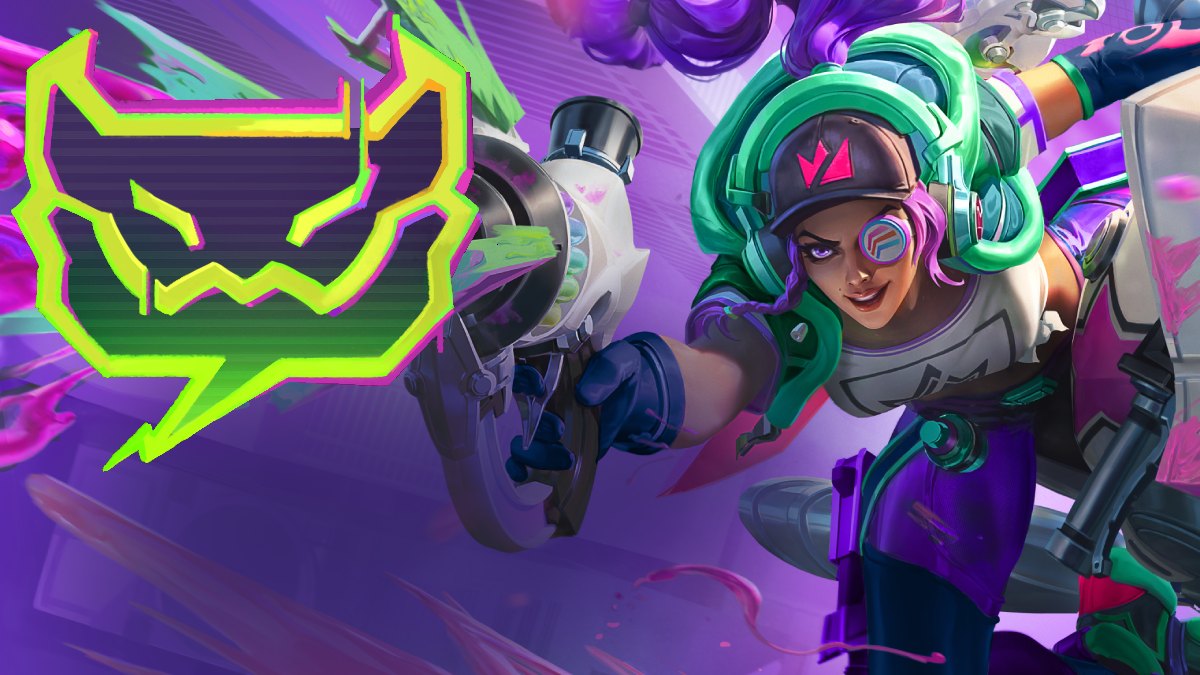
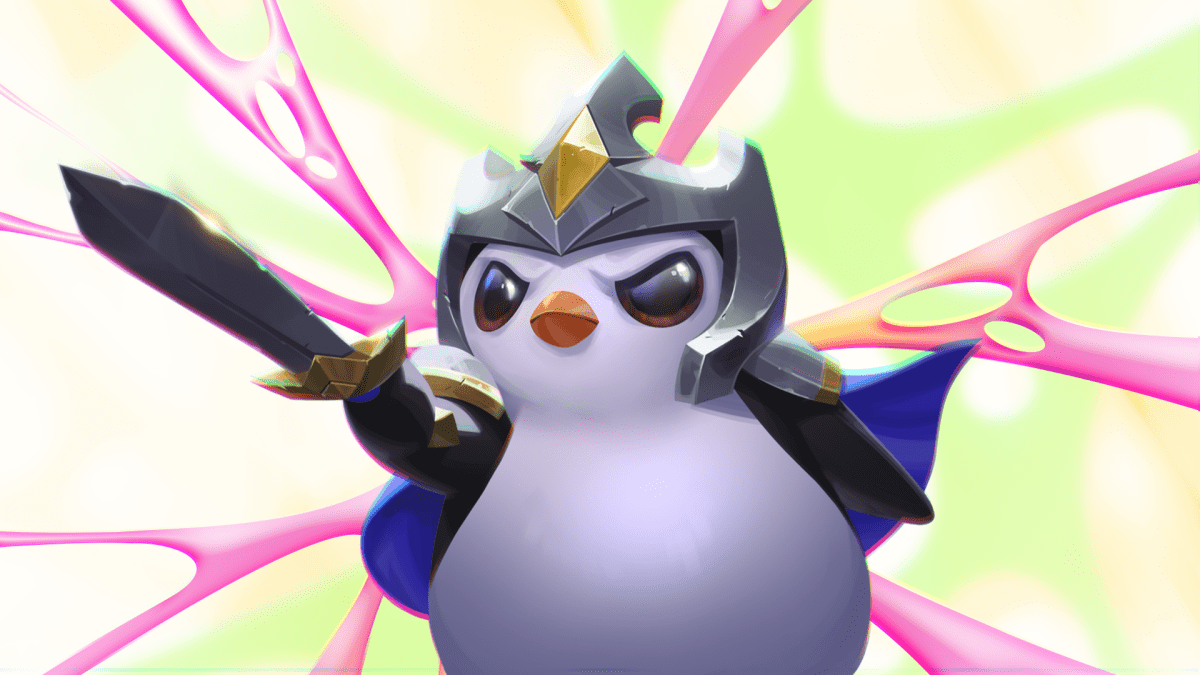
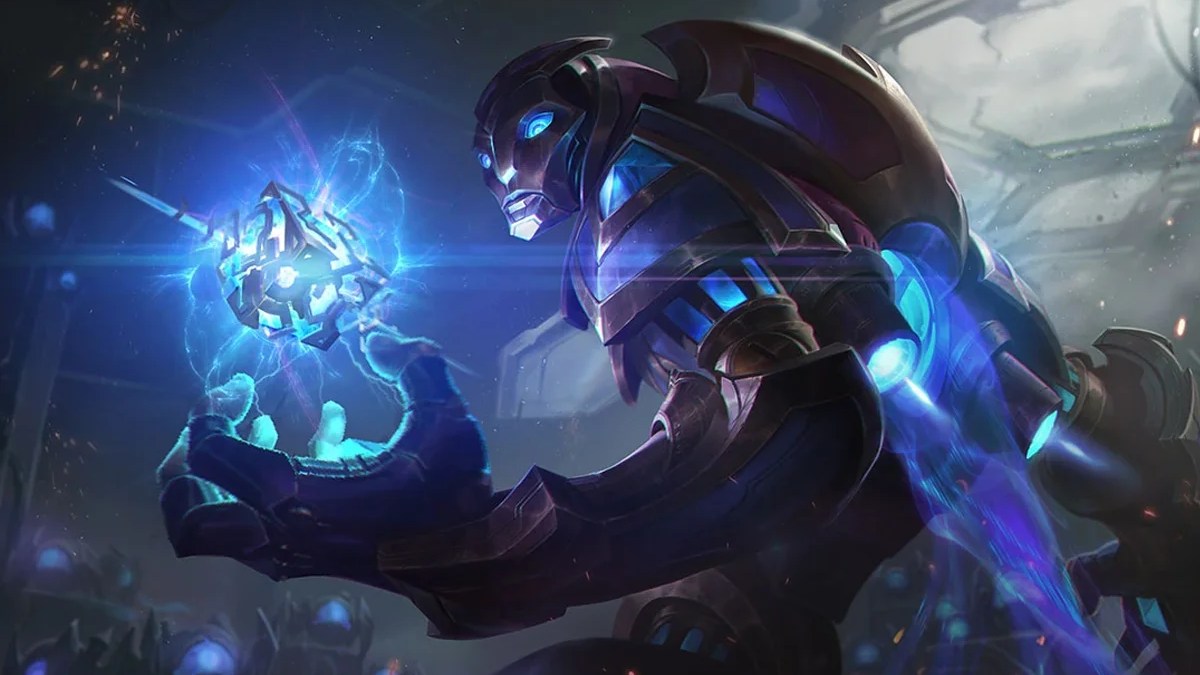
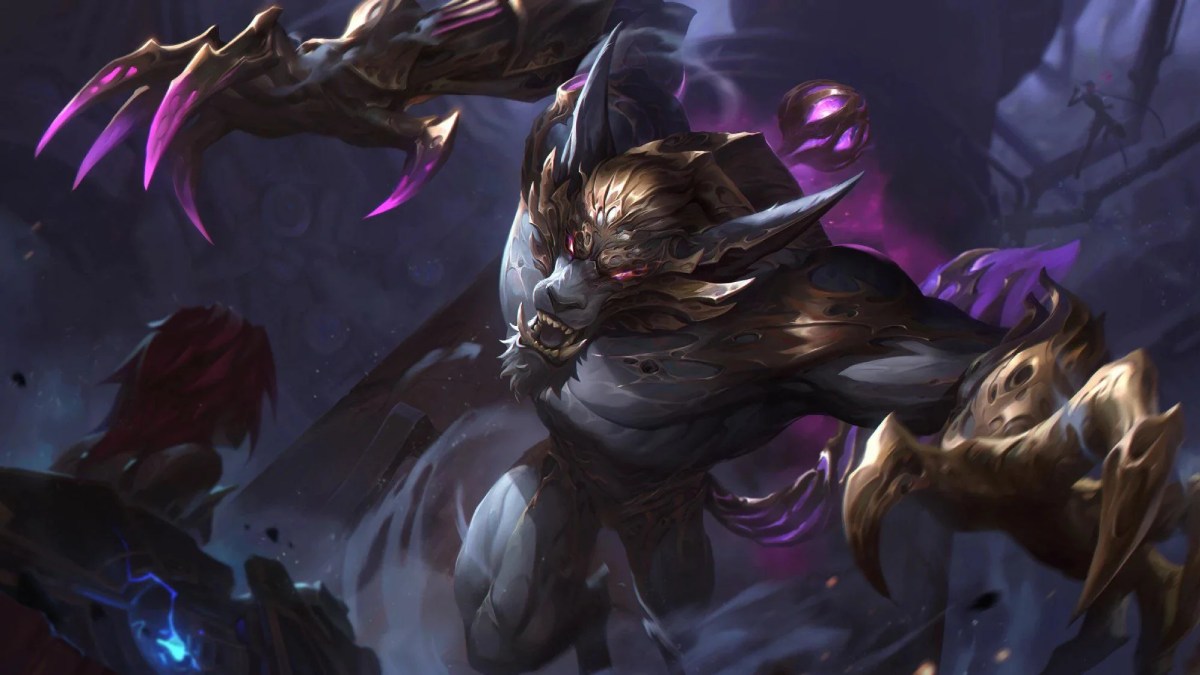
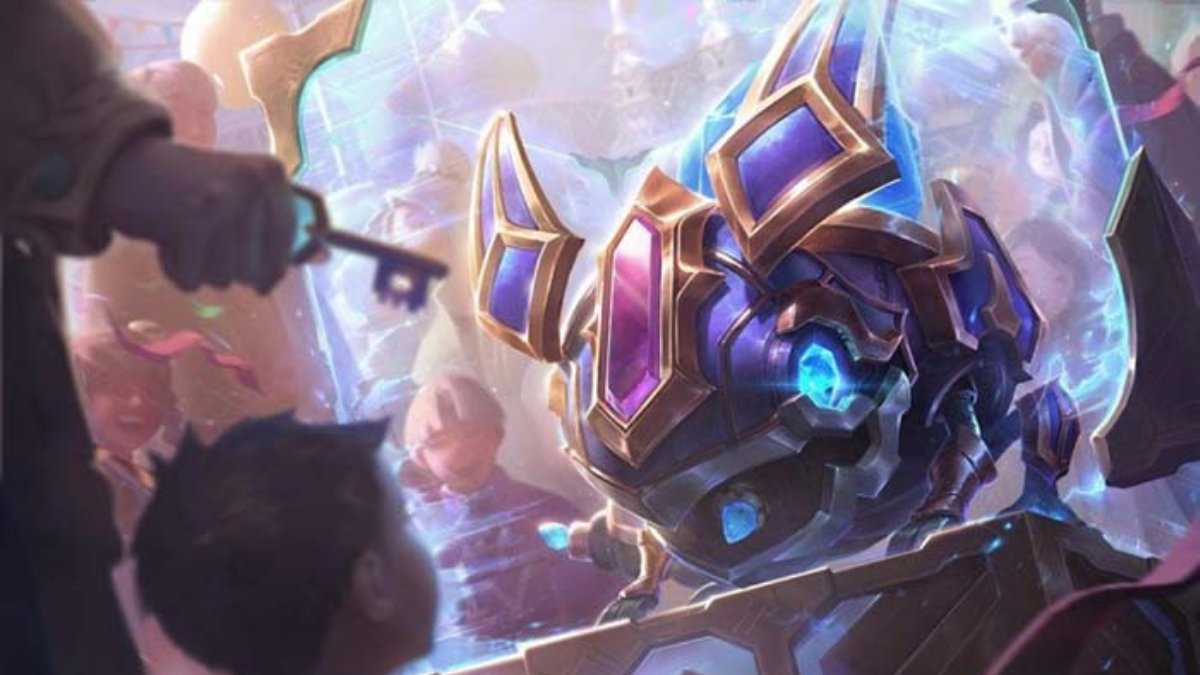
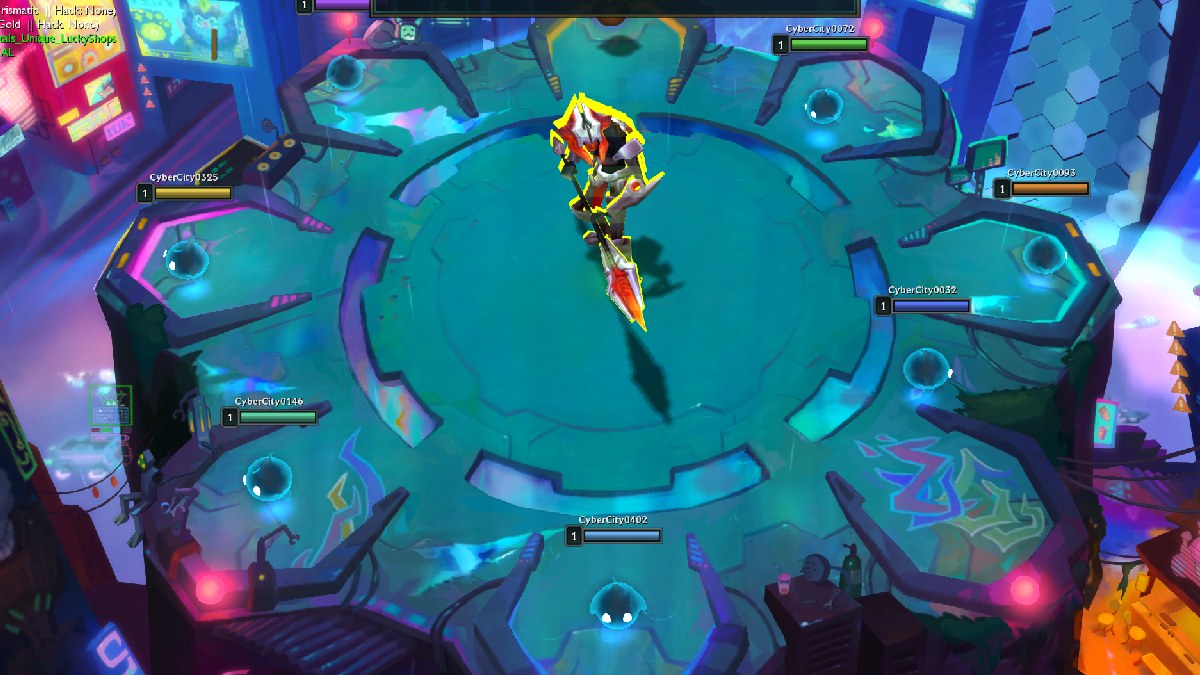

Published: Jan 19, 2021 11:00 am